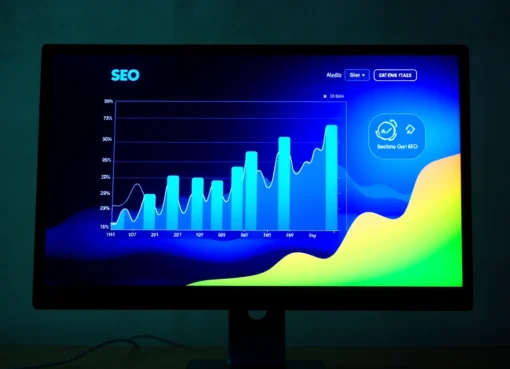Stay Ahead with Key Insights on Social Network Trend Updates for 2024

Understanding the Basics of Social Network Trend Updates
Staying ahead in the ever-evolving digital landscape requires a keen eye on social network trend updates. These trends serve as vital indicators of shifting user behaviors, platform algorithm changes, and emerging content formats that can significantly influence digital marketing strategies. For businesses, influencers, and content creators alike, understanding what social network trends are, why they matter, and how to monitor them is fundamental to maintaining relevance and competitive advantage. To explore these elements comprehensively, it is essential to start with a clear grasp of the underlying concepts and data sources involved.
What Are Social Network Trends and Why They Matter
Social network trends encompass the patterns, themes, and evolving behaviors observed across various social media platforms such as Facebook, Instagram, TikTok, Twitter, LinkedIn, and emerging ones like Clubhouse or BeReal. These trends include viral content formats, popular hashtags, user engagement behaviors, platform feature adoption, and shifts in content consumption preferences. Recognizing these trends allows brands to adapt their messaging, optimize content delivery, and engage audiences more effectively. For example, a rising trend like short-form video content on TikTok prompted many marketers to pivot toward video-heavy campaigns, resulting in higher engagement and brand visibility.
Furthermore, social network trends are crucial because they often predict future platform developments and user preferences. Staying attuned to these trends provides a strategic advantage—enabling proactive rather than reactive marketing, fostering innovation, and enhancing audience loyalty. If companies neglect trend updates, they risk falling behind competitors who leverage real-time insights to craft timely and relevant campaigns.
For more detailed insights on integrating trend updates into your strategic planning, visit Social Network Trend Updates.
Common Sources for Trend Data Analysis
Effective trend analysis begins with reliable data sources that provide accurate, timely insights. The main sources for trend data include proprietary platform analytics, social listening tools, industry reports, and user-generated content analysis. Social media platforms like TikTok or Instagram provide native analytics dashboards that reveal engagement metrics, content performance, and audience demographics.
Social listening tools such as Brandwatch, Sprout Social, and Talkwalker enable brands to monitor brand mentions, hashtag usage, and sentiment analysis across multiple channels. These platforms help identify emerging conversations and viral content, providing early indicators of new trends.
Industry reports from market research firms like Statista, eMarketer, and Hootsuite offer macro-level insights, highlighting platform growth, user behavior shifts, and content preferences. Additionally, analyzing user-generated content, comments, and shares provides qualitative insights into what resonates within specific communities.
Combining these sources allows for a comprehensive understanding of current trends and potential future shifts, enabling data-driven decision-making in your social media strategy.
Key Metrics to Track for Trend Updates
Identifying the right metrics is vital for effective trend tracking. The primary metrics include engagement rate (likes, comments, shares), reach and impressions, hashtag popularity, video views, and audience growth rate. Monitoring viral content’s virality coefficient—how rapidly it spreads—is essential for spotting emergent trends.
Other critical indicators encompass platform-specific behaviors such as TikTok’s “duet” and “stitch” features adoption, Instagram Stories usage trends, and Twitter hashtag trends. Sentiment analysis scores can reveal whether conversations around a topic are positive, neutral, or negative—helping assess the health of a trend.
Utilizing these metrics consistently enables marketers to detect early signs of trending topics, understand their lifespan, and gauge their relevance to their own audience.
Tools and Techniques for Analyzing Social Network Trends
Popular Analytics Platforms and Software
The digital ecosystem offers a plethora of tools tailored to social trend analysis. Platforms like Google Analytics can track referral traffic from social sites, while specialized tools such as BuzzSumo identify trending topics, content engagement, and influencer activities. Social media management tools like Hootsuite, Sprout Social, and Buffer provide dashboard views of platform-specific metrics, making trend detection more manageable.
Advanced analytics solutions incorporate AI and machine learning to predict future trends based on historical data. For instance, Brandwatch’s consumer research capabilities analyze millions of mentions to forecast emerging themes, while Talkwalker leverages AI-driven sentiment analysis to understand public perception shifts.
Choosing the right suite of tools depends on your organizational needs, including the desired depth of insights, ease of integration, and budget constraints.
Leveraging Data Visualization for Better Insights
Visual representation of data—through charts, graphs, and heat maps—enhances trend comprehension. Effective data visualization allows marketers to identify patterns quickly, such as spikes in hashtag usage or sudden engagement surges, which signal emerging trends.
Tools like Tableau, Power BI, and native analytics dashboards enable the creation of interactive visualizations. For example, a heat map showing engagement across different regions can reveal geographic trends, while time-series graphs illustrate the lifecycle of viral content.
Leveraging visualization not only simplifies complex data but also facilitates communication within teams and supports strategic decision-making grounded in clear, actionable insights.
Advanced Techniques for Trend Prediction and Forecasting
Predictive analytics is the next frontier in social trend analysis. Machine learning models can analyze historical data to forecast future trending topics, allowing brands to act proactively. Techniques such as natural language processing (NLP) analyze vast amounts of textual data to identify emerging themes and sentiment shifts.
Statistical modeling, such as time-series forecasting, helps estimate when a trend might peak or decline. Incorporating external factors like seasonality, platform algorithm changes, and market events enhances the accuracy of these predictions.
Implementing these advanced techniques requires skilled data scientists or specialized software but yields significant competitive advantages by enabling timely content pivoting and strategic planning.
Applying Social Network Trend Updates to Your Strategy
Adjusting Content Strategy Based on Trends
Once trends are identified, aligning your content strategy accordingly is imperative. This includes creating content that integrates trending themes, formats, or hashtags to maximize visibility. For example, leveraging trending audio on TikTok or participating in viral challenges can boost reach and engagement.
Augment your content calendar to include timely topics, foster user participation, and adapt messaging tone to resonate with current sentiments. Regularly auditing content performance in relation to trending topics ensures continuous optimization.
Engagement Tactics to Capitalize on Current Trends
Engagement tactics include real-time interaction, personalized responses, and collaborative initiatives like influencer partnerships aligned with trending topics. Live sessions, Q&As, and trend-specific campaigns foster authenticity and capitalize on momentum.
Monitoring trending conversations and quickly contributing relevant content helps brands stay visible and relevant, transforming passive followers into active advocates.
Case Studies of Successful Trend Implementation
One notable example is Nike’s early adoption of health and wellness trends during the pandemic, launching campaigns that focused on home workouts. By swiftly aligning with the global shift, Nike increased engagement and reinforced brand loyalty.
Similarly, TikTok’s “Duet” feature was utilized by brands like Guess to create viral challenges that boosted brand awareness, illustrating the importance of trend-driven content strategies.
Challenges and Best Practices in Tracking Trends
Overcoming Data Overload and Misinformation
One significant challenge is the sheer volume of data, which can overwhelm even sophisticated tools. Filtering relevant signals from noise requires setting precise parameters and using AI-powered filtering to focus on meaningful conversations. Combatting misinformation involves corroborating data from multiple sources and maintaining a skeptical approach towards viral content that may lack authenticity.
Ensuring Relevance and Authenticity in Content
While trends can be powerful, they must be authentic to your brand identity. Forced or superficial adoption can lead to audience distrust. It’s essential to adapt trends in a way that aligns with your brand’s voice, values, and audience expectations.
Measuring ROI and Performance Impact
Tracking the effectiveness of trend-based campaigns involves analyzing engagement metrics, conversion rates, and brand sentiment before and after trend integration. Setting clear KPIs, such as increases in followers, website traffic, or sales attributable to trend-driven content, ensures measurable outcomes.
Future Outlook for Social Network Trend Updates
Emerging Platforms and Technologies
The social media landscape continues to evolve with platforms like BeReal, Discord, and emerging augmented reality (AR) and virtual reality (VR) applications. These new spaces offer fresh opportunities for trend creation and participation, often driven by younger demographics.
Predicted Trends and Market Shifts
Predictions indicate a surge in authenticity-focused content, such as behind-the-scenes footage and user-generated stories. Privacy-conscious users will favor platforms and features emphasizing transparency and control. Additionally, AI-driven content creation and personalized feeds will enhance trend detectability and viral potential.
Preparing Your Brand for the Next Wave
To stay ready, brands should invest in versatile content creation, remain agile in their strategic planning, and continually monitor emerging platforms and technologies. Cultivating a culture of innovation and responsiveness ensures your brand can swiftly adapt to future social network trends.


